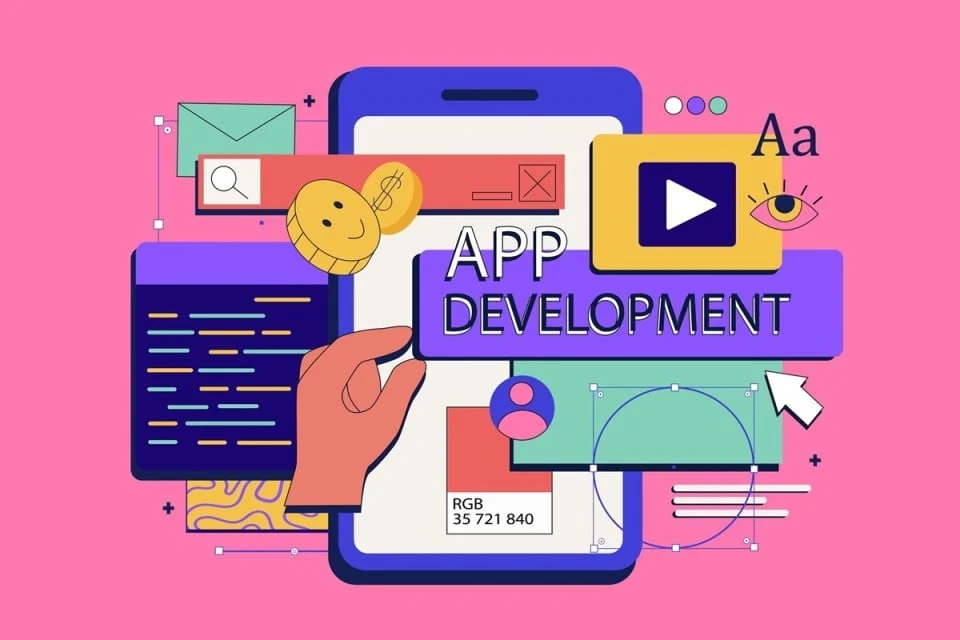
Cross-platform app development frameworks are quickly becoming more in demand in today’s fast-paced digital environment. These platforms let developers design programs that fit well on many operating systems, giving consumers a uniform experience independent of their devices.
Cross-platform app development for iOS, Android, and Windows helps companies save time and money by using a single codebase across several platforms. The top 10 cross-platform app development frameworks created to satisfy the needs of the future generation of mobile apps will be discussed in this article.
These systems streamline development and let businesses develop scalable, creative, and high-quality applications. With more than 6.6 billion smartphone users, no company can afford to lose its presence on extensively utilized mobile application development frameworks – Android & iOS.
What is a Cross-Platform App Development Framework?
Cross-platform software can work on several computer systems like Android, iOS, Windows, Blackberry, and more. The applications developed on this framework do not need separate coding for every platform; instead, once coding will provide the basis for the app to perform as effectively on all devices. Almost all the top mobile app development services firms swear upon, and this is one of the most often used techniques in app development nowadays.
The best frameworks for developing cross-platform mobile apps:
#1. Flutter
Originally developed by Google as an open-source cross-platform app development tool, flutter has recently become somewhat well-known. Using a single codebase to create applications for iOS, Android, and even web platforms helps one of its main benefits Strong UI tools from Flutter enable developers to construct natively produced apps with sophisticated interfaces.
Key Features
● High-performance apps with smooth animations
● Hot reload feature for fast testing and debugging
● Extensive library of pre-built widgets
● Support for mobile, web, and desktop platforms
#2. React Native
Another quite well-liked cross-platform app development tool introduced by Facebook is React Native. It enables creators of native-like apps for iOS and Android to leverage JavaScript and React. React Native stresses reusability so developers may code once and distribute on many platforms.
Key Features
● Reusable parts for quicker advancement
● Hot reload for instantaneous changes in development.
● great support from the community
● Connection between native code and outside libraries
#3. Xamarin
Owned by Microsoft, Xamarin is an open-source, cross-platform software development tool that lets Android, iOS, and Windows creators use a single codebase. Xamarin is a wonderful solution for those acquainted with Microsoft’s technologies because it uses C# and the .NET framework.
Key Features
● Native performance with a shared codebase
● Access to native APIs and libraries
● Strong community and corporate support from Microsoft
● Xamarin.Forms for fast UI development
#4. Ionic
Open-source Ionic builds cross-platform applications using web technologies like HTML, CSS, and JavaScript. Ionic lets developers construct gorgeous, high-performance mobile and desktop apps in concert with platform development tools such as Angular, React, or Vue.
Key Features
● Native app performance using a web-based methodology
● Easy access to a large collection of pre-designed UI elements
● The fast cycle of development with live reload
#5. Cordova
Established open-source tool Apache Cordova uses HTML, CSS, and JavaScript—standard web technologies—to create cross-platform applications. By allowing developers to construct applications running within a native WebView, Cordova provides access to native device capabilities.
Key Features:
● Easy to set up and begin growing from
● Excellent plugin capability to access native features
● Support of Windows, Android, and iOS platforms.
● Strong community support and records
#6. PhoneGap
Originating at Apache Cordova, PhoneGap is a well-known cross-platform app development tool. It lets software creators utilize and implement standard web technologies on many platforms. Additionally, by providing cloud-based development tools, PhoneGap helps to streamline deployment.
Key Features
● Straightforward and quick to operate
● Compilation based on clouds to create applications
● Access native device APIs via plugins.
● Robust records and community support
#7. NativeScript
Open-source NativeScript lets developers create native mobile applications using JavaScript, TypeScript, or Angular. It produces high-performance cross-platform programs by allowing access to native APIs via JavaScript without extra code wrappers.
Key Features
● Straight-line access to native APIs
● High-performance programs using one codebase
● Support for angular-rich UI components, templates, JavaScript, and TypeScript.
#8. Framework7
Framework 7 is a free, open-source mobile cross-platform app development tool for iOS and Android applications, built with web technologies like HTML, CSS, and JavaScript. It provides a native-like experience free from outside instrument dependence.
Key Features
● Framework-independent (works with or without React, Vue, or Svelte)
● High-performance, native-looking UI components
● Extensive library of widgets and components
● Support for multiple platforms, including web, iOS, and Android
#9. Unity
Unity is well-known for game creation, it has become a potent tool for producing cross-platform applications outside gaming. Unity has become a choice for creating interactive and immersive applications with its solid 2D, 3D, AR, and VR app creation tools.
Key Features
● Modern 3D and 2D graphic engine
● Cross-platform compatibility spans over 25 platforms, including PC, mobile, and AR/VR.
● Perfect for games and interactive apps and tools
#10. Sencha Ext JS
Sencha Ext JS is a potent cross-platform app development tool designed mostly for creating data-intensive online apps. Development of enterprise-level mobile applications capable of deployment on both Android and iOS devices using JavaScript and HTML5.
Key Features
● Robust UI components for building complex apps
● High-performance framework for data-heavy applications
● Supports integration with React and Angular
● Provides comprehensive support for charts, graphs, and data grids
Wrap Up
The success of your project depends on selecting the correct cross-platform app development framework, given today’s competitive app development scene. From Flutter’s high-performance UI toolkit to React Native’s strong community support to Unity’s immersive app features, the above-listed frameworks have unique benefits. These frameworks can help companies create scalable, high-quality applications that perform flawlessly across many platforms while saving time and money.
Knowing the advantages and shortcomings of every framework will let you, regardless of size—start-up or established—make the best decision when searching for cross-platform development services. With the correct tools, you may create the next generation of applications that satisfy both consumer wants and future technology requirements.









Leave a Comment